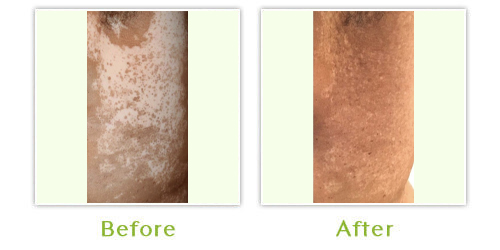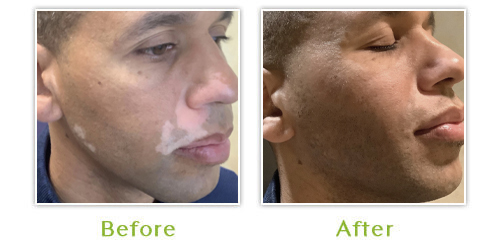The diagnosis and treatment of vitiligo
Dr. Cheryl Burgess has seen many skin concerns in her office at the Center for Dermatology and Dermatologic Surgery. With locations in Washington, DC, and Annapolis, Maryland, she can evaluate patients and get them a definitive diagnosis so they can seek treatment for medical and cosmetic dermatology concerns.
One condition that mystifies many of our patients is vitiligo, a disorder that results in white patches on the skin that begin without warning. When this condition develops, working with a skin specialist “near me” will be the first step in finding effective treatment options that can reduce or disguise the changes in the skin’s appearance.
What is vitiligo?
Our Board-certified dermatologist, Dr. Cheryl Burgess, best describes vitiligo as a long-term skin condition characterized by white patches on the skin losing their pigment. The exact cause of vitiligo is still unknown, but several potential triggers, such as sunburn, stress, or an autoimmune disorder, exist. Vitiligo most commonly presents on exposed areas like the hands, face, and neck but can appear anywhere on the body.
How is vitiligo treated?
There are several treatment options for vitiligo repigmentation treatment, including some of the following solutions:
- Topical steroids
- Phototherapy (light-based) treatments
- Skin camouflage cosmetics
For some of our patients, a combination of treatments and certain steps, such as the use of cosmetics, can assist individuals in finding a way to disguise the pigmentation issue and improve their self-confidence and self-esteem affordably and effectively.
Working with a skilled professional team is also vital in getting compassionate and empathetic care to help you work through the physical and emotional elements of vitiligo and other similar skin disorders.
Call a skin specialist “near me” for a definitive diagnosis and discuss treatment for vitiligo and other skin concerns!
At the Center for Dermatology and Dermatologic Surgery, Dr. Cheryl Burgess and her dedicated team are here to assist with various cosmetic and medical dermatology concerns.
If you suspect you have vitiligo or are seeking a definitive diagnosis, our team can help. Call our Washington, DC office at (202) 955-5757 or our Annapolis, MD office at (410) 224-1195.
FAQs – Vitiligo treatment
Our team will ask several thorough questions about your medical history and talk to you about any family members with a history of vitiligo or autoimmune diseases. Lab work may be done to check for any vitamin or mineral deficiencies, and a specialized black light called a Woods light can detect depigmented areas that are not noticeable with the eyes alone. A biopsy, a sample of the skin, may also be taken for a definitive diagnosis.
The most noticeable and obvious sign of vitiligo is loss of pigmentation on the skin. However, other less common symptoms include whitening of the hair on the scalp, eyebrows, and even the eyelashes, and sometimes changes in the inside of the mouth or the retina of the eyes. During active stages, some patients may also experience itching in the newly depigmented areas for a period of time.
Stress might play a role in vitiligo in terms of triggering or causing progression for those who are already predisposed to getting it. However, it has been difficult to determine what causes it to develop for one individual and not another and the differences in the severities.
The death of melanocytes, the cells that produce the color of our hair and skin, is the primary cause of the etiology. It may be linked to skin trauma, exposure to certain chemicals, autoimmune factors, and genetics.




